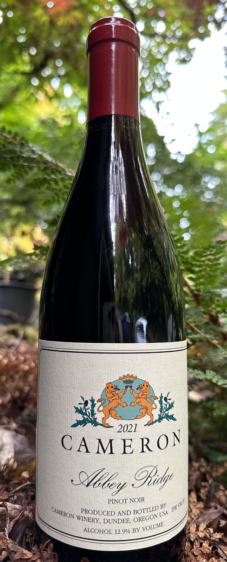What Makes a Vintage Fabulous?
From John, December 2nd, 2014
Freshly crushed Clos Electrique Pinot noir. Photo courtesy of Olivia Schelly
Whenever a vintage gives us beautiful fruit to vinify, discussion often revolves around “why?”. Some growers will tell you that it was the meticulous manner in which they cared for the vineyard. Some winemakers will strut around attempting to take credit. But the truth always lies in the vagaries of weather. And generally the vagaries are most important in the spring (around bloom) and in the Fall (just prior to harvest). Even the previous vintage (with its effect on primordial bud development) can be equally credited.
So this brings us to 2012 which is getting lots of positive press. The crop ended up tiny overall in 2012 and for the most part this was due to necrosis of the grape flowers. With necrosis, the promising little flowers simply dry up and, for a while at least, sit there tormenting the grower with what could have been! In 2012 a warm early Spring initiated substantial growth and the roots responded with ample ammonia to fuel the early growth. But then, just prior to bloom, the average temperatures dropped precipitously, growth stalled and the ammonia levels started to rise (apparently nobody thought to tell the roots to cool it). When ammonia levels start to become toxic, the floral parts of the plant are particularly sensitive and necrosis results.
What this meant overall for the developing 2012 vintage was that the crop would be small. In our vineyards, it would average less than 1 ton per acre (or around 13-14 hl/hectare). These are tiny yields of considerably less than half of normal. As we proceeded through a warm, pleasant summer the crop slowly ripened. And then we hit almost perfect Fall weather: cooler than average night temperatures (which preserves acidity) and warmer than average daytime temperatures (which aids ripening). And to top it off, we experienced absolutely clear weather from the 22nd of September to the 12th of October which covered the bulk of harvest.
The result is wines of high intensity (due to the small crop), perfect ripeness (due to the Fall weather) and high acidity (due to cool nights). And while the intensity on these young wines makes them seem a bit “un-Pinot noir-like”, they will show their mettle as they age.
Share ThisRecent News & Rants
old vines, old wines & an old winemaker
One of the advantages of being an “old-timer” in the world of enology and viticulture is that our vines have aged along with me. It is a well known phenomenon in the world of wine that old vines tend to produce superior wine. A recent tasting of 18 vintages of Clos Electrique Blanc magnums proved that adage to be true! Overall, the consensus was that 8-14 years of aging seems to be the absolute “sweet spot” for this magnificent vineyard.
There’s More... >What do winter cold snaps do to the vineyard?
With climate progressively changing, one phenomena that is starting to occur fairly regularly is an occasional bout of intense winter cold weather. In January 2024, temperatures descended to as low as 4F in high altitude vineyards. Read on to learn how grapevines respond to this stress.
There’s More... >Cheers to a fantastic year ahead!
Bottles of Cameron Winery wine that are currently for sale.
2022 Dundee Hills Chardonnay, 2021 White Oak Pinot noir, 2021 Abbey Ridge Pinot noir, 2021 Clos Electrique Rouge, 2021 Clos Electrique Blanc, 2022 White […]
There’s More... >

